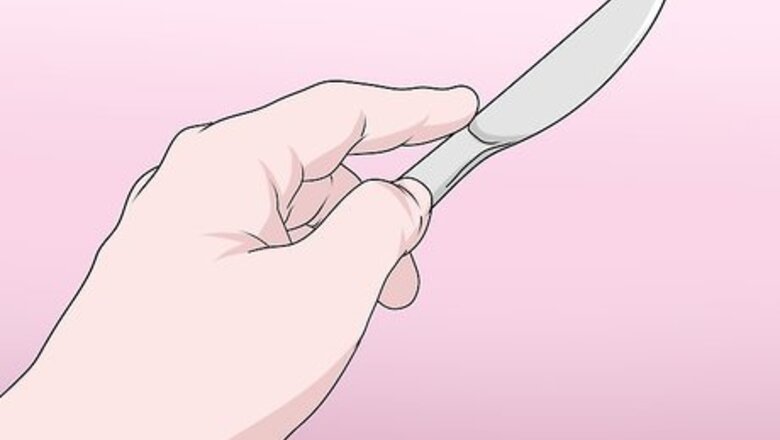
views
- In European-style dining, consistently use your knife and fork as you slice and eat food. Spear the food with your fork to bring it to your mouth.
- In American-style dining, set the knife down after cutting a bite of your food. Then, scoop the food with a fork as though it were a spoon.
- Use spoons to eat liquid dishes (like soup), and as a means of helping food slide onto your fork.
European Style of Using Cutlery
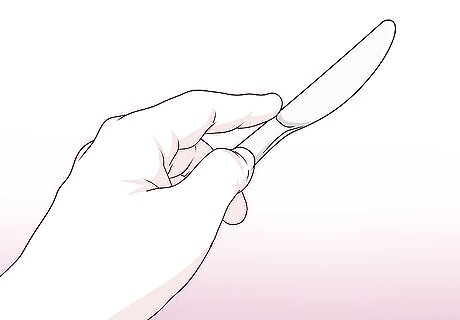
Hold the knife in your dominant hand. Pick up the knife from your place setting with your dominant hand. Hold it with the index finger along the top part of the handle. In a standard place setting, the knife will be placed on the right side. This is because most people are right-handed.
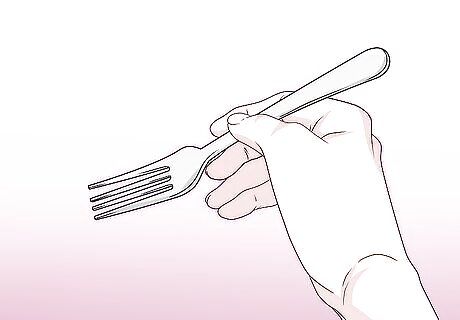
Hold the fork points-down with your non-dominant hand. Pick up the fork from the table using your non-dominant hand. Hold it with the points facing downward towards your food and your index finger on the back of the handle. For example, if you are right-handed, then pick the fork up with your left hand. Flip it so the pointy parts, called the tines, are facing the table and place the tip of your index finger on the back of the handle around the part where the handle is curved.
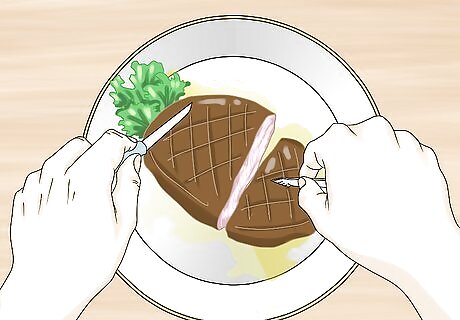
Cut a bite of your food with the knife while using the fork to stabilize it.. Place the tines of the fork against the food you want to cut and slice off a piece with the knife. Only cut a bite at a time and eat it before you cut the next piece. You should never place your cutlery down on the table after cutting your food and starting to eat. Cutting up all your food at once and then placing your knife down is also considered an etiquette no-no. In some cases, it is acceptable to eat using only a fork. For example, when you are eating just a salad or a bowl of spaghetti, it is not necessary to use a knife.
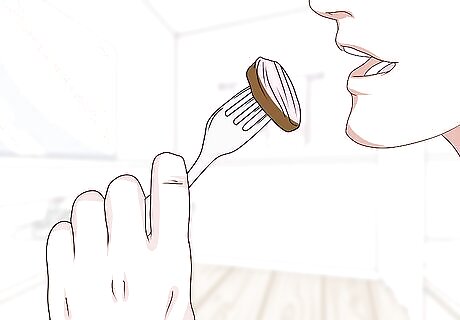
Use the tips of the fork to spear your food and bring it to your mouth. Keep your knife in your dominant hand the whole time you are eating. It is, of course, acceptable to use your fork to scoop certain types of foods that naturally can’t be speared. You can use the knife to help push food that can’t be speared, like rice, onto your fork.
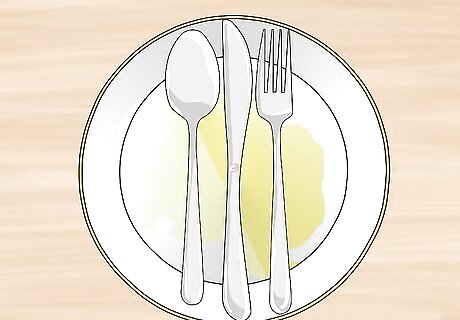
Put your cutlery on the plate side-by-side, angled to the right, after you finish. This is the only time it is considered polite to place your fork and knife down during dining. Place all cutlery meant for that course, even if you didn’t use a particular utensil, onto the plate when you are finished. For example, if the main course was spaghetti and you only used a fork to eat it, you should still place the knife on the plate when you are finished eating. Make sure to place the fork tines-down to indicate that you are finished. For example, this is especially important if you are in a European restaurant and you want the waiter to see that you are done.
United States Style of Using Cutlery
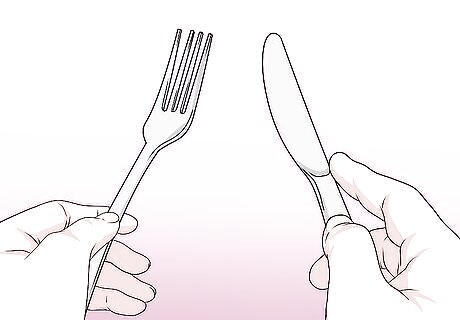
Hold the fork in your non-dominant hand and the knife in your dominant hand. The United States style of dining uses the same starting grips as the European style. Hold the fork facing downward with your index finger on the back of the handle and the knife with your index finger along the back of the handle as well. The United States style of eating with a fork and knife is also referred to as the zig-zag method.

Cut a piece of your food and place the knife down on the top edge of your plate. Use your fork’s tines to hold the food stable while you cut a piece. Place the knife at about a 45-degree angle on the top right edge of your plate, with the blade facing in, when you are done cutting. Placing the knife on the edge of the plate is known as the resting position. Do not place the knife on the table in this method to avoid getting the table dirty. You can cut about 4-5 small pieces if you'd like, but do not cut the whole plate at one time.
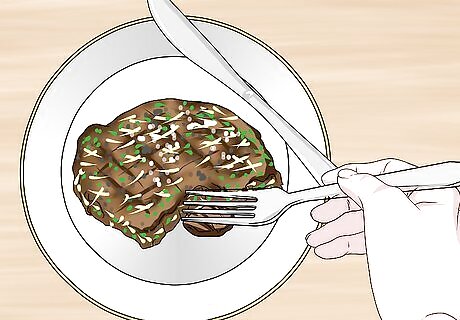
Switch the fork to your dominant hand and flip it so the points face up. Transfer the fork from one hand to the other and reverse the position so you are holding it like a spoon. The index finger of your dominant hand will now be below the handle and your thumb will be on top. For example, if you are right-handed then you started with the fork in your left hand facing down towards the table. You should now have the fork in your right hand with the tines facing up towards the ceiling. This method of switching the fork and knife back and forth is where the United States style of using cutlery gets it’s zig-zag name. If you are eating something that doesn’t require a knife, then you would just keep your fork in your dominant hand, face up, the whole course.
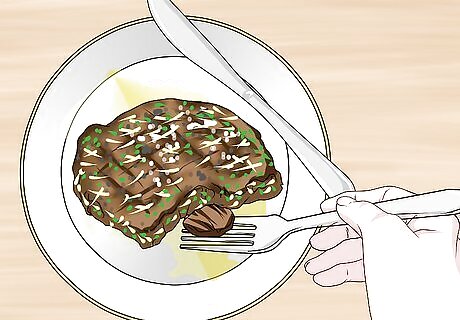
Use your fork to scoop up the food and bring it to your mouth. Eat with your fork as if it was a spoon. Don’t use your fork to spear food like in the European method of using cutlery unless it is absolutely necessary. You should never hold your fork with your fist completely wrapped around it. Always keep it with your thumb on top and your index finger underneath the handle. Hold the fork at a slight angle to the plate, rather than completely vertical.
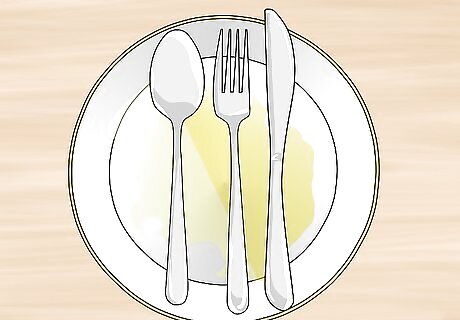
Put the fork and knife side-by-side on the plate when you finish at an angle. Place the fork with the tines up and put the knife right next to it. Angle the handles down and to the right of the plate. Remember to put any unused cutlery that was meant for that course on the plate as well. If you’re at a restaurant and you don’t do this, the waiter will still do it for you and bring you new cutlery for the next course. It’s proper etiquette to do this yourself.
How to Use Spoons
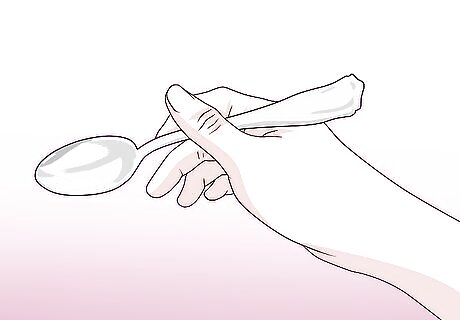
Use a spoon with your dominant hand to eat soups or other liquids. Hold the spoon so that it is facing up with your index finger below the handle and your thumb on top. Carefully scoop the soup or liquid up with the spoon and bring it to your mouth to eat it. Eat slowly and carefully to avoid spills or unpleasant sounds from cutlery scraping.

Place the spoon on the plate that the bowl rests on when you are done eating. Most times, at least in restaurants, soups and liquid dishes are served in bowls that rest on a plate to catch spills. Place the spoon on the right side of this plate when you are done eating. This will serve to catch any drops of liquid that remain on it and so your dishes can be easily taken away If there is no plate under the bowl, then it is acceptable to place the spoon in the bowl.
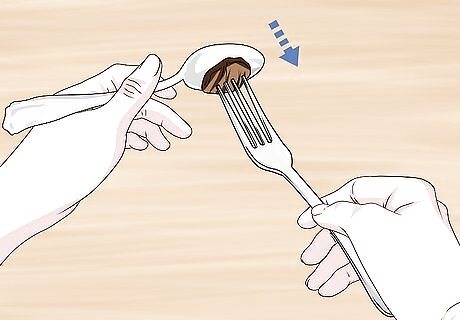
Use a spoon to help push food onto your fork instead of a knife. Hold the spoon in your non-dominant hand and the fork in your dominant hand with the points facing up. Turn the spoon on its side and use it to gently push food onto your fork to help you scoop it up. This is method is especially useful for foods, such as rice, that are more difficult to scoop up with a fork.













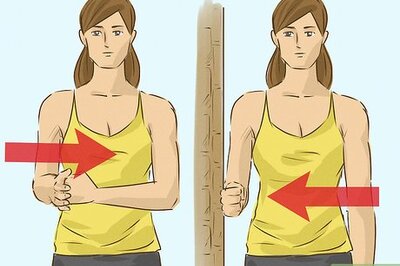

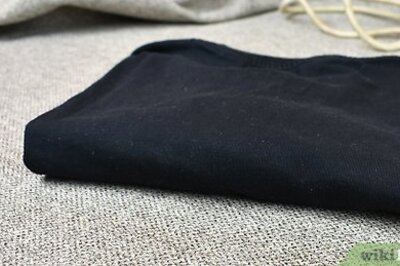

Comments
0 comment